Ancient City Of Adab That Flourished In North Sumer
A. Sutherland - Ancient Pages.com - Ancient Adab (now Bismaya, Iraq) was an important early ancient Sumerian city, probably the main seat of the goddess Ninhursag, the fourth of the creating deities (others are Anu, Enki, and Enlil).
Adab once lay on the ancient route of the Euphrates River, approximately 25 miles southeast of Nippur. When the river changed its course, the city began to vanish and lost its greatness.
In a list of cities, found on a tablet from Nineveh, appears the name UD-NUN-KI, which is accompanied with a note that it means: ‘Adab’. Therefore the ancient people called this city Adab (modern Tell Bismaya).
City of Adab in ancient sources
Adab was excavated by the American archaeologist and Assyriologist, Edgar James Banks, in the years (1903–04). The excavations revealed prehistoric buildings and also others dated to the reign of Ur-Nammu (reigned 2112–2095 BC). Adab was an important Sumerian center only up to about 2000 BC.
See also:
Lugal-Anne-Mundu: ‘King Of The Universe’ And Powerful Leader Who Restored Sumer To Its Former Glory
King Ur-Nammu – King Of Ur, King Of Sumer And Akkad – The One Who Built The Temple Of God Enlil
There are mainly two literary sources that mention Adab; the first is the Sumerian King List, which ascribed to Adab, one early dynasty comprising of only one king, Lugal-anne-mundu, who was said to have ruled for 90 years. His reign is dated back to about 2400 BC. After Lugal-Anne-Mundu’s reign, his empire collapsed.
Another brief mention of the city of Adab can be found the introduction to the Hammurabi Code. King Hammurabi says that he built or restored the city UD-NUN-KI (Adab) and its temple E-Mach.
Interestingly, at almost all other times in its history, Adab was ruled by kings who had much power and controlled all or most of Babylonia (southern Mesopotamia).
Excavations of Adab
Altogether, the city of Adab appears sixteen times in the archaic tablets from Uruk, pointing to the existence of an early settlement at the end of 4000 BC, located in the same place where archaeological excavations revealed traces of urban life in later periods.
However, archaeologists did not find any materials (plates, bricks, vessels, structures), which would precede a period of the first centuries of 3000 BC.
Remains of temples and palaces were found there, with objects bearing votive inscriptions. Some of them identified a king of Adab, named Lugal-Dalu, who reigned about 2400 BC. Banks and his team also unearthed a massive ziggurat, several temples, private houses, a cemetery, a palace, and at least one large archive of cuneiform tablets.
Double walls surrounded the city of Adab, which consisted of two parts, divided by a canal. The excavated ruins – those found close to the surface of the mounds - belonged to Ur-Nammu and his son Shulgi, the second king in the Third Dynasty of Ur. Shulgi reigned for 48 years (c. 2029 – 1982 BC) and completed the construction of the Great Ziggurat of Ur, which was begun by his father Ur-Nammu.
In more ruins just below these, there were found artifacts dated back to the reign of Naram-Sin ("Beloved of Sin") who reigned c. 2254–2218 BC and Sargon of Akkad, about 2300 BC.
Despite these valuable findings, not much archaeological information was recovered about Adab; at that time, no modern excavation techniques and modern analysis were available.
Among other fascinating discoveries made at Adab city was:
“the bitumen-paved floor sloped gently to a vertical drain in the east corner. The drain was of the usual type, and a rectangular opening, thirty by eight centimeters, opened into it..”
“We found the drain empty to the depth of three meters, but probably it reached four times that distance into the ground. Along the south-eastern wall there were traces of an upper chamber, and just above the corner by the drain was a small compartment with walls of bitumen, as if it were a reservoir for water. The bricks beneath it showed that they had been subjected to great heat.
“Was this a furnace for heating the water? And was the water in the reservoir high above the bath that it might fall in a shower upon the bather below? Was there a hot-water shower-bath for the use of the public at Adab nearly five thousand years ago? (Dr Banks reported in” Bismya, or the lost city of Adab”)
Based on city seal impressions from the city of Ur the ancient Adab was most probably part of a league or alliance of Sumerian cities.
Written by – A. Sutherland AncientPages.com Staff Writer
Copyright © AncientPages.com All rights reserved. This material may not be published, broadcast, rewritten or redistributed in whole or part without the express written permission of AncientPages.com
Expand for referencesReferences:
Ward W. H. The seal cylinders of western Asia
Sitchin, Zecharia. There Were Giants Upon the Earth
More From Ancient Pages
-
 One Of Europe’s Most Ancient Domestic Dogs Lived In The Basque Country 17,000 Years Ago
Archaeology | Nov 29, 2022
One Of Europe’s Most Ancient Domestic Dogs Lived In The Basque Country 17,000 Years Ago
Archaeology | Nov 29, 2022 -
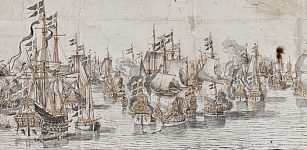 Missing ‘Delmenhorst’: 17th Century Danish Warship From ‘Battle Of Fehmarn’ Found
Archaeology | Sep 22, 2020
Missing ‘Delmenhorst’: 17th Century Danish Warship From ‘Battle Of Fehmarn’ Found
Archaeology | Sep 22, 2020 -
 On This Day In History: James Cook – Navigator And Explorer – Killed On Feb 14, 1779
News | Feb 14, 2017
On This Day In History: James Cook – Navigator And Explorer – Killed On Feb 14, 1779
News | Feb 14, 2017 -
 Red-Headed Alevi In Kurdistan Could Be Guardians Of Watchers’ Secret Knowledge And Shed Light On The Excalibur Legend
Ancient Mysteries | Jan 31, 2018
Red-Headed Alevi In Kurdistan Could Be Guardians Of Watchers’ Secret Knowledge And Shed Light On The Excalibur Legend
Ancient Mysteries | Jan 31, 2018 -
 Has A 12,000-Year-Old Underwater City Been Discovered Off The Coast Of Louisiana?
Archaeology | Mar 9, 2022
Has A 12,000-Year-Old Underwater City Been Discovered Off The Coast Of Louisiana?
Archaeology | Mar 9, 2022 -
 Unexplained Encounters With Invisible Barriers – Mysterious Rays And Energy Fields
Featured Stories | Jul 17, 2018
Unexplained Encounters With Invisible Barriers – Mysterious Rays And Energy Fields
Featured Stories | Jul 17, 2018 -
 Ancient DNA Reveals Surprising Stories About Migrations And Genetic Mixing Of Our Ancestors
Archaeology | Feb 22, 2018
Ancient DNA Reveals Surprising Stories About Migrations And Genetic Mixing Of Our Ancestors
Archaeology | Feb 22, 2018 -
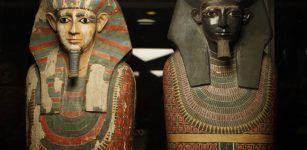 Egyptian Tomb Of The Two Brothers – DNA Solves Ancient Egyptian Mystery
Archaeology | Jan 17, 2018
Egyptian Tomb Of The Two Brothers – DNA Solves Ancient Egyptian Mystery
Archaeology | Jan 17, 2018 -
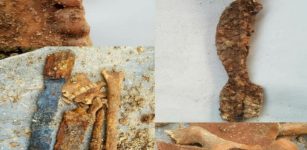 Ancient Tomb Chamber Of Parthian Warrior Was Accidentally Unearthed In Iran
Archaeology | Apr 30, 2020
Ancient Tomb Chamber Of Parthian Warrior Was Accidentally Unearthed In Iran
Archaeology | Apr 30, 2020 -
 First-Ever Discovery Of Roman Road Network Spanning The South West UK Made By LIDAR
Archaeology | Aug 7, 2023
First-Ever Discovery Of Roman Road Network Spanning The South West UK Made By LIDAR
Archaeology | Aug 7, 2023 -
 Medieval Magic – A Service Industry Used By Rich And Poor Alike
Featured Stories | Oct 29, 2019
Medieval Magic – A Service Industry Used By Rich And Poor Alike
Featured Stories | Oct 29, 2019 -
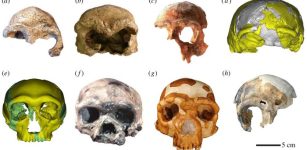 Abundant Hominin Fossils Dating Back 300,000 Years Excavated In Hualongdong (HLD), East China
Evolution | Aug 7, 2023
Abundant Hominin Fossils Dating Back 300,000 Years Excavated In Hualongdong (HLD), East China
Evolution | Aug 7, 2023 -
 Face Of Man From The Lost Medieval Village Of Dzwonowo Reconstructed Using 3D Printing Technology
Archaeology | Jul 20, 2020
Face Of Man From The Lost Medieval Village Of Dzwonowo Reconstructed Using 3D Printing Technology
Archaeology | Jul 20, 2020 -
 Mysterious Ancient Egyptian Severed Hands Practice Investigated By Scientists
Archaeology | Apr 1, 2023
Mysterious Ancient Egyptian Severed Hands Practice Investigated By Scientists
Archaeology | Apr 1, 2023 -
 Controversial Discovery Of Rama’s Bridge – A 1,700,000 Year Old Man-Made Structure
Featured Stories | Jun 19, 2014
Controversial Discovery Of Rama’s Bridge – A 1,700,000 Year Old Man-Made Structure
Featured Stories | Jun 19, 2014 -
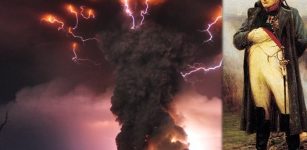 Was Napoleon Bonaparte Defeated At Waterloo Because Of Volcanic Eruption?
Archaeology | Aug 22, 2018
Was Napoleon Bonaparte Defeated At Waterloo Because Of Volcanic Eruption?
Archaeology | Aug 22, 2018 -
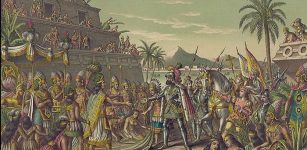 Remains Of Aztec Palace That Belonged To Axayacatl, Father Of Montezuma Unearthed In Mexico City
Archaeology | Jul 18, 2020
Remains Of Aztec Palace That Belonged To Axayacatl, Father Of Montezuma Unearthed In Mexico City
Archaeology | Jul 18, 2020 -
 Solving The Bark Painting Mystery In Australia
Archaeology | Feb 23, 2023
Solving The Bark Painting Mystery In Australia
Archaeology | Feb 23, 2023 -
 The Olmecs – Who They Were, Where They Came From Still Remains A Mystery
Civilizations | Feb 19, 2015
The Olmecs – Who They Were, Where They Came From Still Remains A Mystery
Civilizations | Feb 19, 2015 -
 On This Day In History: Mary Queen Of Scots Born – On December 8, 1542
News | Dec 8, 2016
On This Day In History: Mary Queen Of Scots Born – On December 8, 1542
News | Dec 8, 2016



